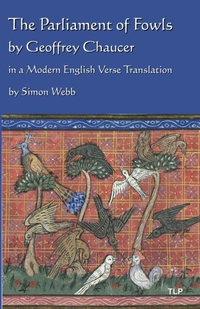Valentine's Day origins: Who invented it and why do we celebrate?
All about the love day tradition


These days we mark the occasion with roses, cards and cosy dinners for two (if you can get the kids in bed first), but the origins of Valentine’s Day suggest it’s a much darker celebration.
Today have Valentine's Day gifts for her, plus Valentine's Day gifts for him and even Valentine's gifts for kids. It's a day that's changed so much over time that many of us wouldn't recognise the real origins of Valentine's Day today.
The 'Day of Love' is one of the oldest celebrations in Europe, with its roots reaching back hundreds of years before Saint Valentine was walking around Rome. Back in the day, it was all about prancing naked through the streets and animal sacrifices(!), but it's safe to say these traditions have been swapped for newer (and safer) ones.
Foodie couples like to indulge in Valentine's Day hampers to mark the occasion, while literature lovers like to send Valentine's Day poems or thoughtful Valentine's messages when it comes to writing your Valentine's Day card.
However you choose to celebrate it, we think it's important to be in the know about the true origins of this annual event. So we've shared who invented Valentine's Day and why we still celebrate it in 2025.
What are the origins of Valentine’s Day?
Valentine’s Day originated in the 6th century BC and comes from the Lupercalia festival, a pagan celebration of fertility that occurred on February 15 in Rome every year.
Members of the Luperci priesthood would sacrifice goats and a dog on the auspicious Palatine Hill, before giving skins of the animals to men who would run around the city naked and strike the women who came up to them. This was supposed to promote fertility among the young population.
GoodtoKnow Newsletter
Parenting advice, hot topics, best buys and family finance tips delivered straight to your inbox.
A post shared by Harridan Vodka (@harridanvodka)
A photo posted by on
Later on in the festival, as the Valentine's Day origins story goes, the women would come together and place their names in a huge urn. The city’s eligible unmarried men would then take turns choosing a name at random. Whoever they chose would be their partner for the year - with many of these match-makings often ending in marriage.
So it's safe to say that St Valentine's Day wasn’t originally a holiday for celebrating love. That meaning came another couple of hundred years later with English poet Geoffrey Chaucer’s poem Parliament of Fowls, written in the 14th century. It describes a gathering of birds in early springtime, “on seynt valentynes day”, and so the day then was made about love.
The Parliament of Fowls: by Geoffrey Chaucer, in a Modern English Verse Translation (Paperback)
RRP: was £5.14, now £3.99 | Amazon
Chaucer’s 'Parliament of Fowls' is a story about love, lust, honour, nature . . . and ducks. Simon Webb’s highly accessible modern English verse translation conveys the humour and colour of Chaucer’s original, and Simon’s introduction explains why the poem is now considered to be the work that first introduced the idea of Valentine’s Day as we know it.
Who was Saint Valentine?
It’s only in the 3rd century AD that the man who would later become Saint Valentine was executed by Roman Emperor Claudius II. While there are many legends about him and others with the same name, it's widely believed that Claudius sent Valentine to prison for helping loved-up Christian couples get married at a time when it was forbidden.
During his time in prison, Valentine tutored a young blind woman called Julia who was the daughter of his jailer. The story goes that God restored Julia’s sight after the two prayed together. And on the evening before his execution, Valentine wrote a note to her and signed it with, “From your Valentine.”
Despite the multiple legends around this man and others like him, the Catholic Church declared this Valentine a saint and listed him as a martyr on February 14 - aka. St Valentine’s Day.
Who invented Valentine’s Day and why?
Pope Gelasius I technically invented Valentine’s Day in AD 496 when he established The Feast of Saint Valentine, in memory of the martyred saint who died on that day over 200 years before.
The first known link between Valentine's Day and coupledom was February 14 1400 though. This was when King Charles V of France created La cour amoureuse (the High Court of Love) in Paris. Entirely run by women, the court met to deal with marriage contracts, infidelity, divorce and domestic violence.
But the Valentine's Day we know today, with the cards and chocolates, really started as late as 1985. This was when Hallmark launched their Valentine's Day adverts in the US, claiming themselves as "The Valentine's Store". The video shows off all the cards and heart-shaped gifts that customers could buy in store.
If you're watching one of the best romantic movies or terrestrial television over Valentine's Day week this year, you'll see similar ones from across the whole retail spectrum.
Why do we celebrate Valentine’s Day?
While Valentine's Day origins suggest celebrating to remember St Valentine, many non-religious people see February 14 as the day to show love to their romantic partners. This often comes about through sweeping declarations via Valentine's Day cards, gifts, chocolates and candlelit dinners.
Those more cynical say Valentine's Day has turned into a marketing technique by everyone from flower delivery services to clothing brands to sell products. Alongside Christmas and Halloween, Valentine's Day is one of the biggest opportunities for marketing every year.
According to one survey by the National Retail Federation and Prosper Insights & Analytics, Americans were expected to spend $25.9 billion on Valentine’s Day in 2023 - increasing from the $23.9 billion estimated in 2022.
How do we celebrate Valentine’s Day?
Most people celebrate Valentine's Day by declaring their love for a romantic partner - whether for the first time or not. This gesture is traditionally accompanied by big bunches of roses, special Valentine's Day cards, and heart-shaped boxes of chocolates amongst other presents. But times have changed, and some retailers no longer sell red roses for Valentine's Day.
Jo Reason, director of brand and range at Bloom & Wild told GoodtoKnow about the traditions of sending flowers, and why they've banned red roses for Valentine's. She said, "The history of sending flowers for Valentine's Day goes back to the Victorian era, specifically The Victorian Flower Language otherwise known as Floriography. This is when learning the unique symbolism behind each flower became a popular hobby. Back then, flowers were used to deliver top-secret messages. For example, if you had a crush on someone, you’d send them a single red rose and if they sent back a yellow carnation, the message would be clear that they were not interested. People would carefully select and arrange flowers in a bouquet or floral arrangement to convey a specific message or sentiment to the recipient. The arrangement's colours, types of flowers, and even the way the flowers were presented all held significance in this intricate floral communication system."
Jo has more than 10 years of experience in various roles within the marketing and communications industry. She has been at Bloom & Wild since 2022 and she is responsible for overseeing brand management, social media, copywriting, and creative production.
Explaining why Bloom and Wild has withdrawn its red roses from sale at this romantic time of year, she added, "Since 2021, Bloom & Wild no longer sells red roses for Valentine's Day. After more and more customers opted for pastel or bright bouquets in 2020 instead of traditional red rose bouquets, we conducted user research on the old red roses. In a survey of customers (both male and female), 58 per cent thought red roses were cliché, 79 per cent said they preferred a unique and thoughtful gift over something traditional like red roses, and 70 per cent of women would prefer something else. Furthermore, 38 per cent even considered red roses as a last-minute gift or a gift with little thought."
Data from Evolution Money states that each year Brits are expected to spend £262 million on flowers for Valentine's Day. Red roses have been confirmed as the most popular choice. Further stats reveal that 65% of people exchange cards on the day, whilst 14% of Brits expect chocolate to mark the romantic occasion.
Valentine's Day is also one of the busiest days of the year for restaurant reservations. Coming second only to Mother's Day, couples are always keen to dine out over candlelight. According to research from the National Restaurant Association (NRA) in the US, 1 in 4 Americans make a booking for dinner over a week of Valentine's Day. And 51% of these say they choose the big day itself for the special meal.
Romantic trips away are also on the rise for Valentine's Day in 2023. Research from Allianz Partners USA's "Top Valentine’s Day Destinations" report revealed that searches for Valentine's Day travel plans were up by 45% in 2023 compared with 2022. Cancun topped the list of the number one international holiday locations for the big day, closely followed by St. Thomas is the first of the U.S. Virgin Islands.
Over Valentine's Day week, British supermarkets often release limited edition Valentine's Day treats and special Valentine's Day "dine in for two" deals for couples that prefer dinner at home or on the sofa instead.
A photo posted by marksandspencer on
Is Valentine’s Day only for couples?
No, Valentine’s Day doesn’t only have to be celebrated by couples. When Valentine’s cards went over to the US from England in the 1800s, they were for romantic partners and friends.
Various traditions around the world also include non-romantic love in Valentine’s celebrations. In Finland, people celebrate Ystavanpaiva (Friend’s Day) on February 14. While in Mexico, the day is called Dia del amor y la amistad. This means the day of love and friendship.
In recent years, the days leading up to the day have been nicknamed to celebrate various other kinds of love. For example, there’s “Galentine’s Day” on February 13 which, according to Urban Dictionary, is when groups of female friends (single or not) get together to share their platonic love for each other.
In other family news, you might like to know how to spice up your relationship - 27 tips from the experts and trust us, #18 is a game changer, or romantic Valentine's Day cakes and if you want to get the kids involved try these Valentine's Day cookies recipe.

Selina is a Senior Family Writer for GoodtoKnow and has more than 16 years years of experience. She specialises in royal family news, including the latest activities of Prince George, Charlotte, Louis, Archie and Lilibet. She also covers the latest government, health and charity advice for families. Selina graduated from the University of Sheffield in 2006 with a degree in Journalism, and gained her NCTJ and NCE qualifications. During her career, she’s also written for Woman, Woman's Own, Woman&Home, and Woman's Weekly as well as Heat magazine, Bang Showbiz - and the Scunthorpe Telegraph. When she's not covering family news, you can find her exploring new countryside walking routes, catching up with friends over good food, or making memories (including award-winning scarecrows!)
